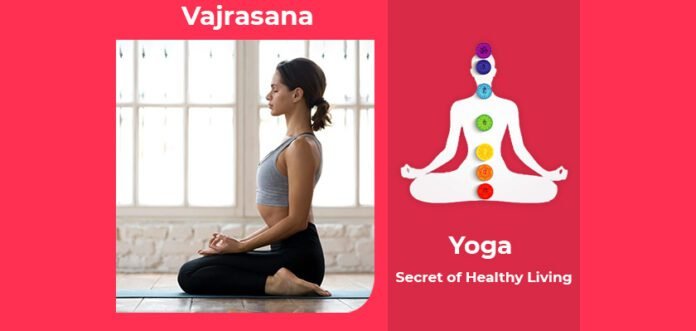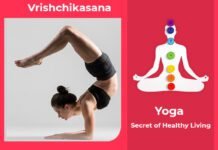What is Vajrasana
Vajrasana Like Padmasana, this is also the Asana for meditation. One can sit comfortably for a prolonged period in this Asana.
- This is one asana which can be done immediately after consuming food. Sit in Vajrasana and do right nostril breathing. This relieves heaviness in stomach and improves digestion.
- This is a very good pose for people suffering from sciatica and sacral infections.
Also Know as: Thunderbolt Posture, Adamantine Pose, Vajra Asana, Vajr Asan
How to start this Asana
- Sit with legs extended together, hands by the side of the body, palm resting on the ground, fingers of the hands together pointing forward.
- Fold the right leg at the knee and place the foot under the right buttock.
- Sole will remain inside.
- Similarly folding the left foot, place it under the left buttock.
- Hands resting on the respective thighs.
- Sit erect, Look towards front and then close the eyes.
How to end this Asana
- While returning to the original position, bend little towards right side take out your left leg and extend it.
- Similarly extend your right leg and return to the original position.
Video Tutorial
Benefits of Vajrasana
According to research, this Asana is helpful as per below(YR/1)
- Relaxes your kneecaps, knees, ankles and feet, improves digestion and reduces gas.
- Relieves sciatica pain.
- ‘Vajrasana’, if done for 10 minutes after a full meal relieves heaviness in stomach due to overeating.
Precaution to be taken before doing Vajrasana
As per several scientific studies, precautions need to be taken in diseases mentioned as per below(YR/2)
- While sitting on the bent feet, the heels should remain out and toes inside, and sole of the foot towards upward.
- Do not sit on the heels.
So, consult your doctor if you have any of the problem mentioned above.
Histroy and scientific base of Yoga
Due to the oral transmission of sacred writings and the secrecy of its teachings, yoga’s past is riddled with mystery and confusion. Early yoga literature were recorded on delicate palm leaves. So it was easily damaged, destroyed, or lost. Yoga’s origins may be dated back over 5,000 years. However other academics believe it could be as old as 10,000 years. Yoga’s lengthy and illustrious history may be split into four distinct periods of growth, practise, and invention.
- Pre Classical Yoga
- Classical Yoga
- Post Classical Yoga
- Modern Yoga
Yoga is a psychological science with philosophical overtones. Patanjali begins his Yoga method by instructing that the mind must be regulated – Yogahs-chitta-vritti-nirodhah. Patanjali does not delve into the intellectual underpinnings of the need to regulate one’s mind, which are found in Samkhya and Vedanta. Yoga, he continues, is the regulation of the mind, the constraint of the thought-stuff. Yoga is a science based on personal experience. The most essential advantage of yoga is that it helps us to maintain a healthy bodily and mental state.
Yoga can help to slow down the ageing process. Since aging starts mostly by autointoxication or self-poisoning. So, we can considerably limit the catabolic process of cell degeneration by keeping the body clean, flexible, and properly lubricated. Yogasanas, pranayama, and meditation must all be combined to reap the full advantages of yoga.
SUMMARY
Vajrasana is helpful in increase flexibility of muscles, improves shape of the body, reduce mental stress, as well improves overall health.




